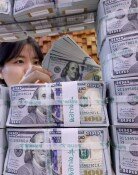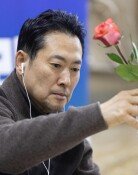Income Growth?
Did you say that the economy is getting better? Then why are people around me uniformly complaining about their economic hardships?
Kim (52), who has been running a Japanese restaurant nearby in the Namdaemun market of Seoul for more than 10 years, is seriously agonizing over whether to quit his business.
With the effects of the introduction of five-day workweek and real name payment of entertainment expenses, he has long given up on nighttime drink sales. With a dwindling number of lunch customers, he is seeing a 30 percent decrease in sales compared to last year.
I learned that as many as four bars in nearby Bukchang-dong have recently shut down. There are many store owners who are willing to close their business as long as they can recoup their investments.
It is reported that the Gross Domestic Product (GDP) of the first half of this year rose three percent year-on-year. But the reality of the grassroots economy is harsh.
As if it is reflecting the situation, the growth rate of the Gross Domestic Income (GDI) has remained in the zero percent range this year.
The reason for the flat income is that the export and import structure of selling cheap and buying expensive is being fixed and domestic consumption is still sluggish.
Lost Income to Reach 20.6 Trillion Won in the First Half-
Worsening trade terms contributed much to the widening gap between indices and reality.
Real trade loss stemming from change in the terms of trade reached 10.525 trillion won in the second quarter (April to June) this year, exceeding the record of 10.076 trillion won in the first quarter (January to March).
Real trade loss represents how much the purchase power of the money earned from export has decreased because of decreasing export prices and increasing import prices. In other words, it stands for lost income.
The figure is high this year because prices of raw materials, including oil, surged, while sharp competition dropped the prices of Koreas main export items, such as semiconductors and cell phones.
Under the circumstances, the GDI growth reflecting the second quarters terms of trade stood at a mere 0.2 percent of the same period last year, remaining in the zero percent range after 0.5 percent rise in the first quarter.
Yoo Byung-kyu, a leading economist of the Hyundai Research Institute, said, That GDI does not grow means peoples spending power is weak, adding, That will serve as a big obstacle to domestic demand recovery in the second half.
Increasing Overseas Spending and Domestic Spending at a Standstill-
Sluggish domestic consumption is cited as a reason why people feel the economic situation is bad.
The government and the Bank of Korea (BOK) emphasized that it is notable that private consumption grew 2.7 percent, the biggest increase in two and a half years, although the economic growth rate in the second quarter remained at 3.3 percent.
However, they did not mention that the figure includes overseas spending which is nothing to do with peoples economic situation.
The BOK said that domestic consumption of households in the second quarter stood at 83.644 trillion won, a mere 1.5 percent year-on-year increase.
On the other hand, overseas consumption rose 29.8 percent to 3.182 trillion won in the second quarter this year from 2.451 trillion won in the same period last year. This is because significant increase in the number of people traveling and studying abroad.
Hong Ki-taek, professor of Economics at Chung-Ang University, pointed out, Overseas consumption contributes little to domestic production activity, adding, We need to advance service sectors, such as education, medical, and tourism industries, to raise domestic consumption.
Ji-Wan Cha cha@donga.com news91@donga.com






![[김순덕의 도발] ‘李부터 연임’ 개헌, 이 대통령은 가능성을 말했다](https://dimg.donga.com/c/138/175/90/1/wps/NEWS/IMAGE/2026/01/16/133172656.1.jpg)
